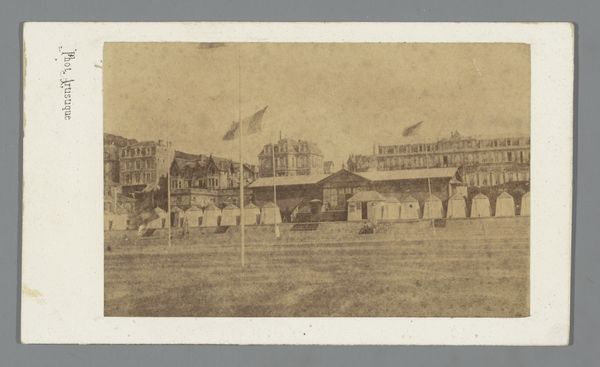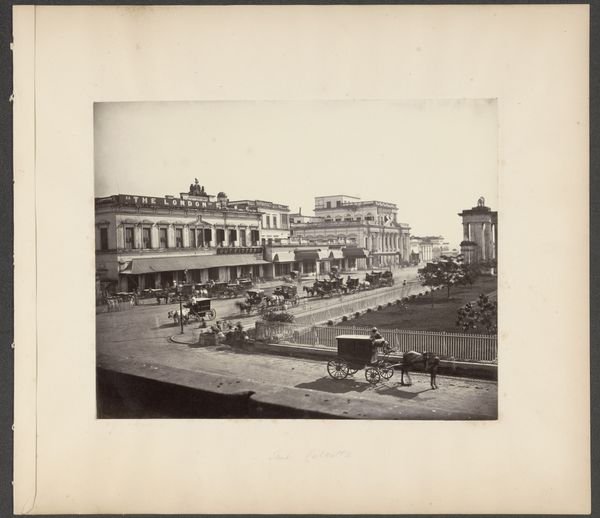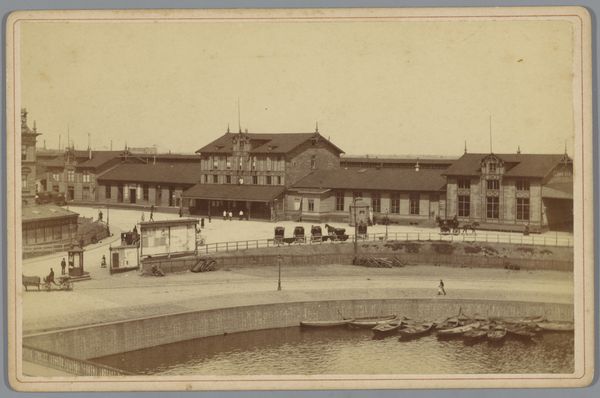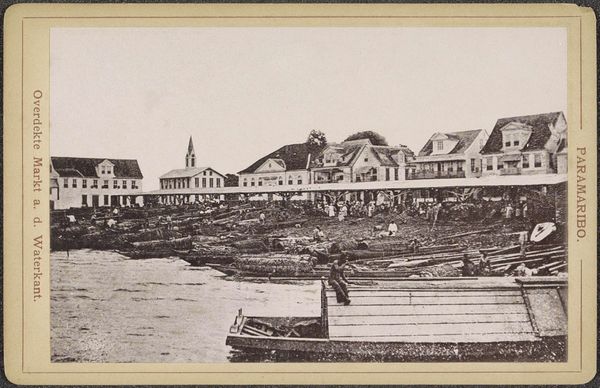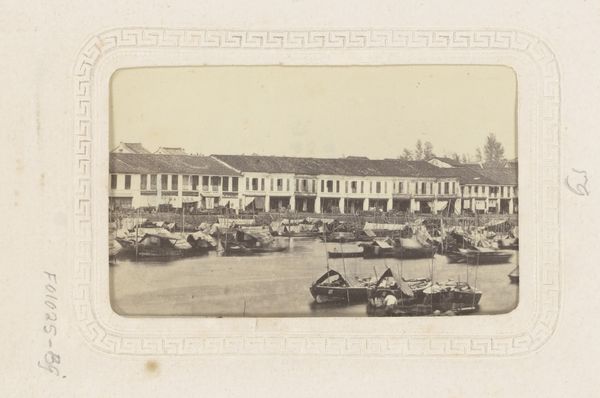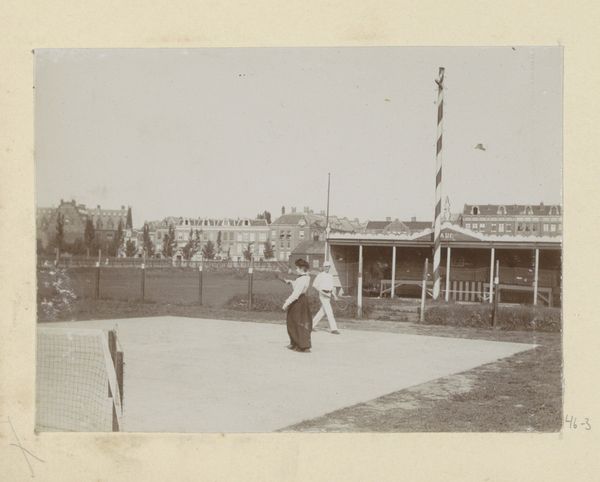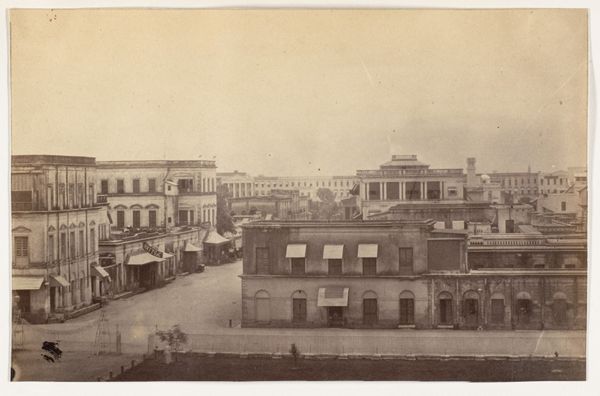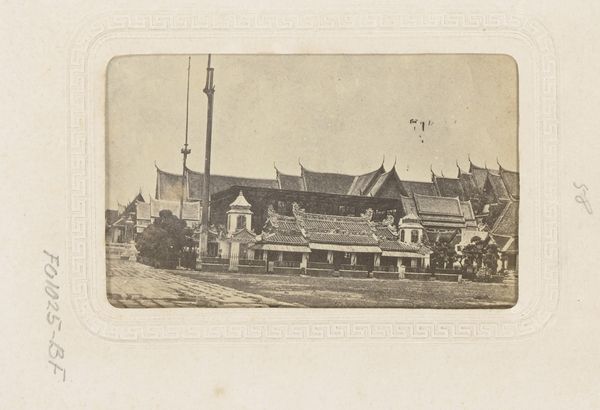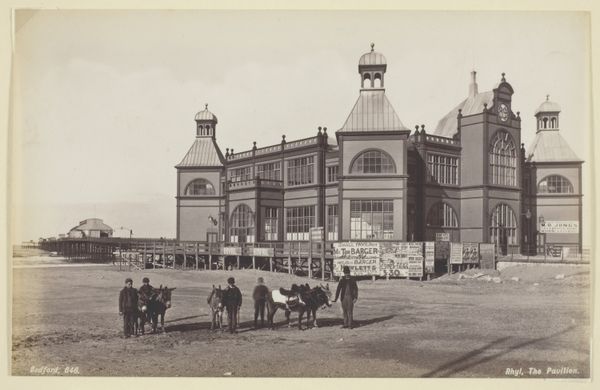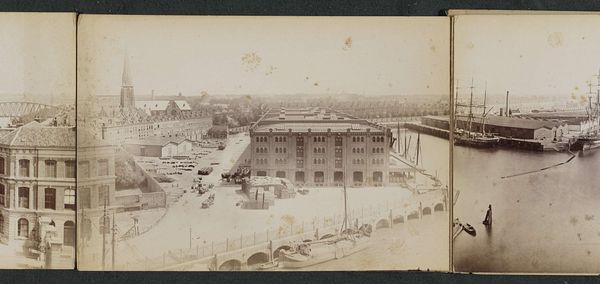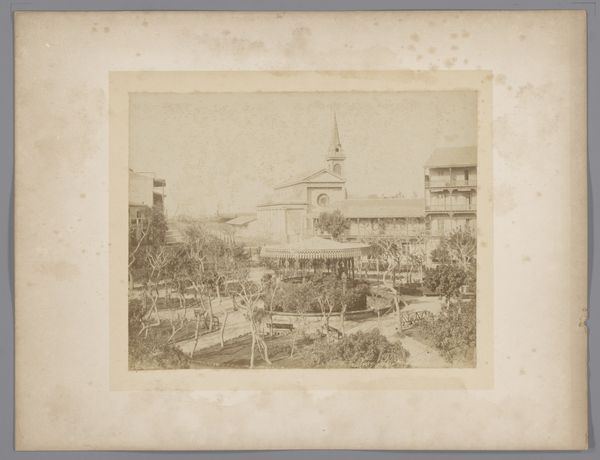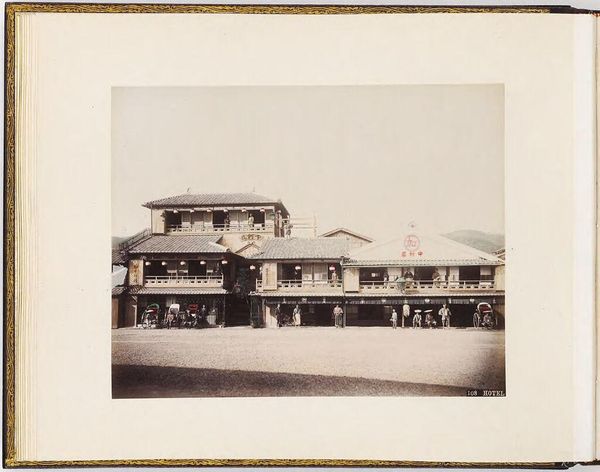
Kade en straat in Port Said met Hotel des Pays Bas en James Slavick Shiphandler c. 1870 - 1891
0:00
0:00
photography, architecture
#
historic architecture
#
photography
#
historical photography
#
orientalism
#
19th century
#
cityscape
#
architecture
Dimensions: height 209 mm, width 276 mm
Copyright: Rijks Museum: Open Domain
Curator: This is a photograph entitled "Kade en straat in Port Said met Hotel des Pays Bas en James Slavick Shiphandler" by Hippolyte Arnoux, dating from somewhere between 1870 and 1891. My first impression is how rigidly it adheres to principles of balance, of visual harmony—the lines of the buildings, the placement of figures... all very deliberate. Editor: It's a constructed, staged view, absolutely. A view crafted to reassure and impress European colonial powers with the seeming order and control of their occupation. The very choice of Port Said as a subject, a crucial location due to the Suez Canal. Curator: Yes, and notice the gradations of tone achieved within a relatively limited palette. From the glistening water, up the spectrum toward to muted sand tones of the architecture. Editor: A carefully chosen perspective, cropping out much of the bustling chaos that no doubt truly existed in that space and time. Those figures that are there... they are exoticized, reduced to forms in a controlled space. It perpetuates a certain romantic vision of "the Orient," suppressing the voices of local residents. Curator: But even if that exoticizing gaze exists, look at the layering effect achieved by placing those figures to mimic perspectival scale. Do you observe how it generates depth within a two-dimensional surface? Editor: Certainly, and the architecture frames these figures within very specific visual narratives about power. We see "Hotel des Pays Bas," highlighting Western economic influence, with "James Slavick Shipchandler"—commerce that extracts value and relies on the exploitation of labor in the East. I find that perspective more compelling. Curator: I can agree with that. While the colonial frame may always remain, Arnoux offers here a sophisticated compositional balance nonetheless. Editor: And I, with my historical focus, find that even with such formal considerations, it speaks to a greater story.
Comments
No comments
Be the first to comment and join the conversation on the ultimate creative platform.
